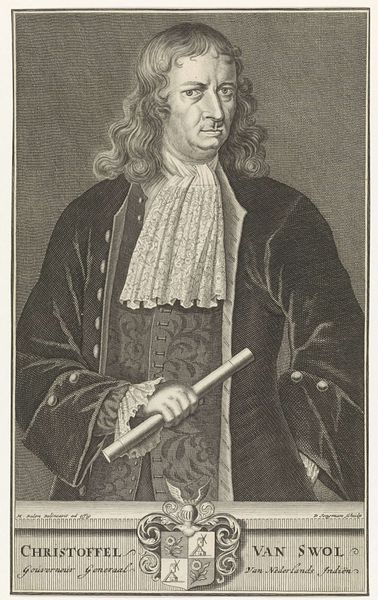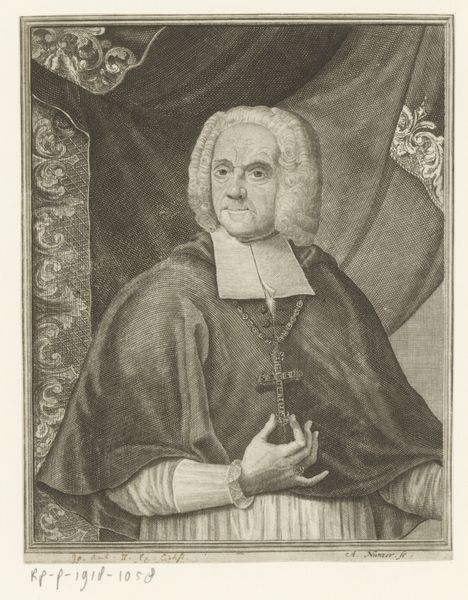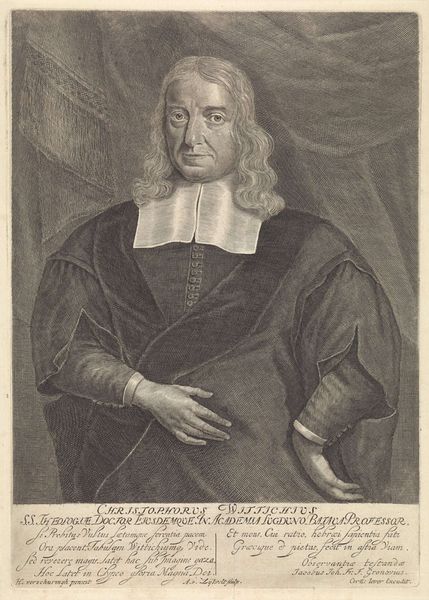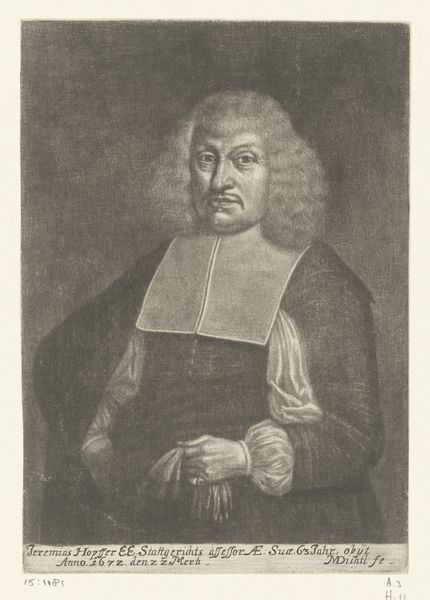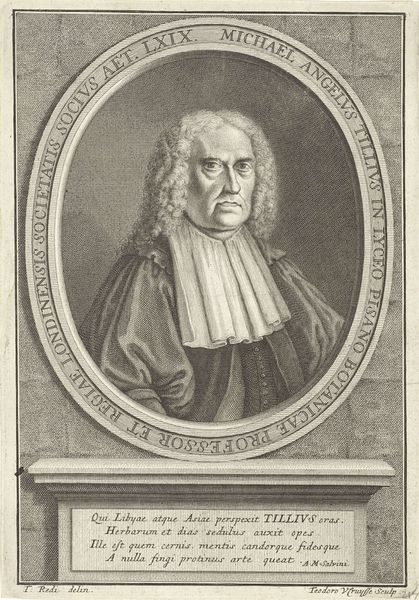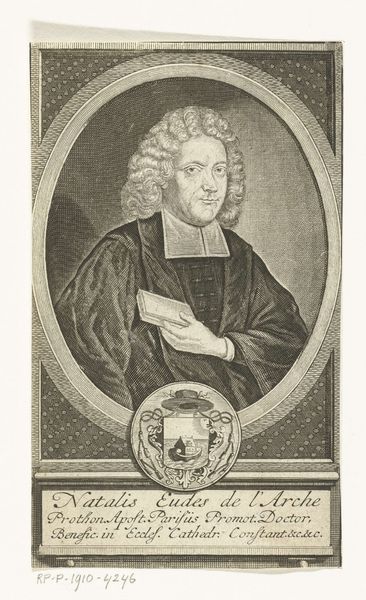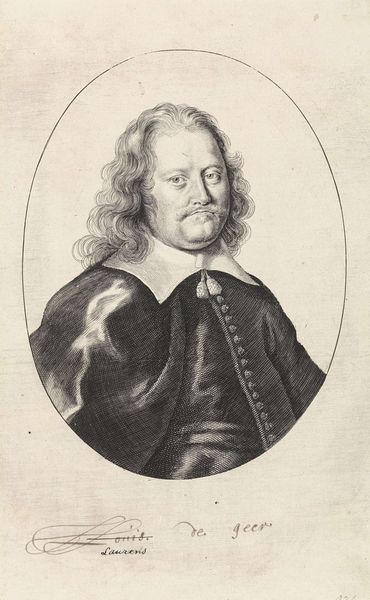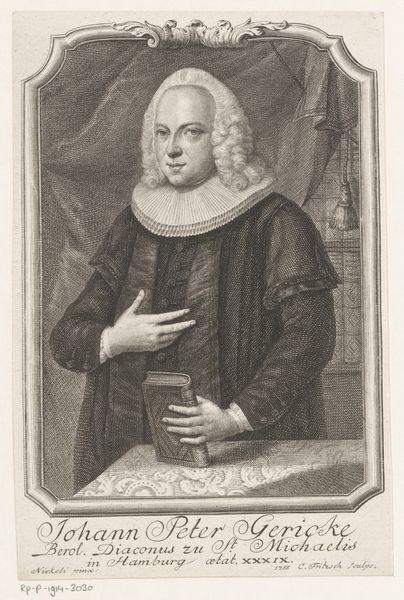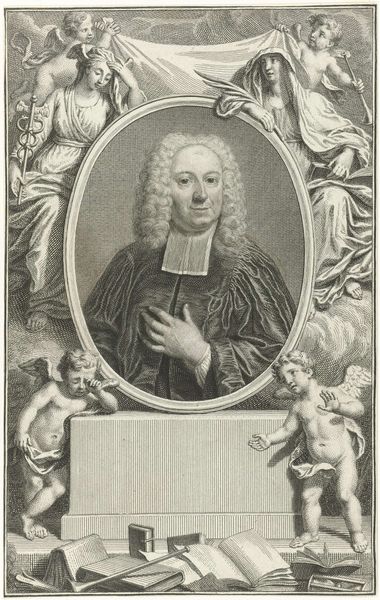
engraving
#
portrait
#
baroque
#
dutch-golden-age
#
old engraving style
#
line
#
engraving
Dimensions: height 298 mm, width 180 mm
Copyright: Rijks Museum: Open Domain
Curator: This engraving presents us with a “Portret van Abraham van Riebeeck,” dating roughly between 1702 and 1749, crafted by Isaac Ledeboer. The work employs line techniques characteristic of its era. What are your immediate thoughts on it? Editor: It strikes me as imposing, despite the somewhat softened quality of the engraving. There's a weightiness, perhaps born from the formal pose and those heavy drapes in the background. It feels symbolic of power. Curator: It is absolutely an exercise in portraying authority. Van Riebeeck, as Gouverneur-Generaal—Governor-General—of the Dutch East Indies, occupied a position of considerable influence and prestige. We see the Dutch Golden Age aesthetic and Baroque influences evident here; how the portrait showcases this individual through carefully considered symbolism. Editor: I agree. The inclusion of the telescope reinforces that association with discovery, expansion, and of course, colonization. His hand gestures are studied—that slight touch to his chest exudes an almost calculated air of dignity, not unlike his lace jabot and the buttons that accentuate his figure. Considering how race and power intertwined during the Dutch East Indies era, how does the piece inform a reading about representation? Curator: A vital question. Riebeeck's portrayal speaks volumes about Dutch colonial ambitions. Engravings like these weren't merely about recording likeness; they served as tools to project power across vast distances. They solidified and normalized a particular image of colonial leadership, masking the violence inherent in their power with a veneer of respectability. And by extension, perpetuating other power imbalances involving race, gender, class, and identity throughout colonized spaces and Dutch society in general. Editor: So this is far more than an image of a single man; it embodies and reinforces an entire power structure. What do we make of the seemingly placid backdrop of draped fabric that nonetheless dominates much of the image’s background? Does it serve only to isolate him? Curator: I view that curtain in contrast to Van Riebeeck. His presence represents order and dominance, while the curtain serves to simultaneously draw and shield. A complex set of layers that invite us to consider, deconstruct, and question power. Editor: Looking at the artwork in this way brings into focus both what’s overtly expressed and what is subtly being concealed within this image, revealing insights into power structures of the time.
Comments
No comments
Be the first to comment and join the conversation on the ultimate creative platform.
